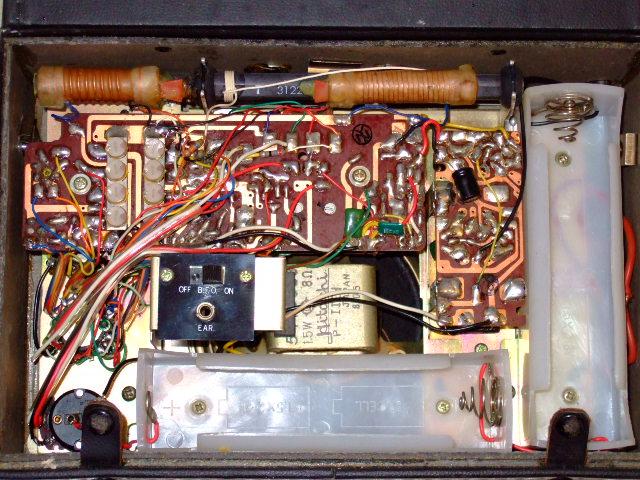
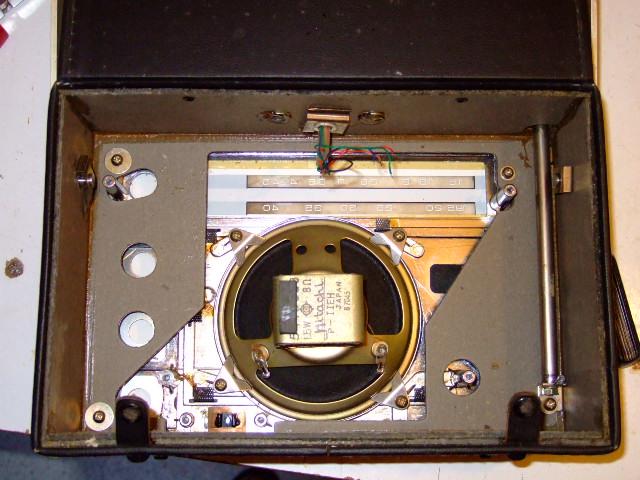 Radios with a cardboard cabinet are often seen from Japan, and when the interior (left) of the radio is removed (right) the cardboard can be clearly seen. For this radio it is still in very good condition.
Radios with a cardboard cabinet are often seen from Japan, and when the interior (left) of the radio is removed (right) the cardboard can be clearly seen. For this radio it is still in very good condition. 
296
Item nr.
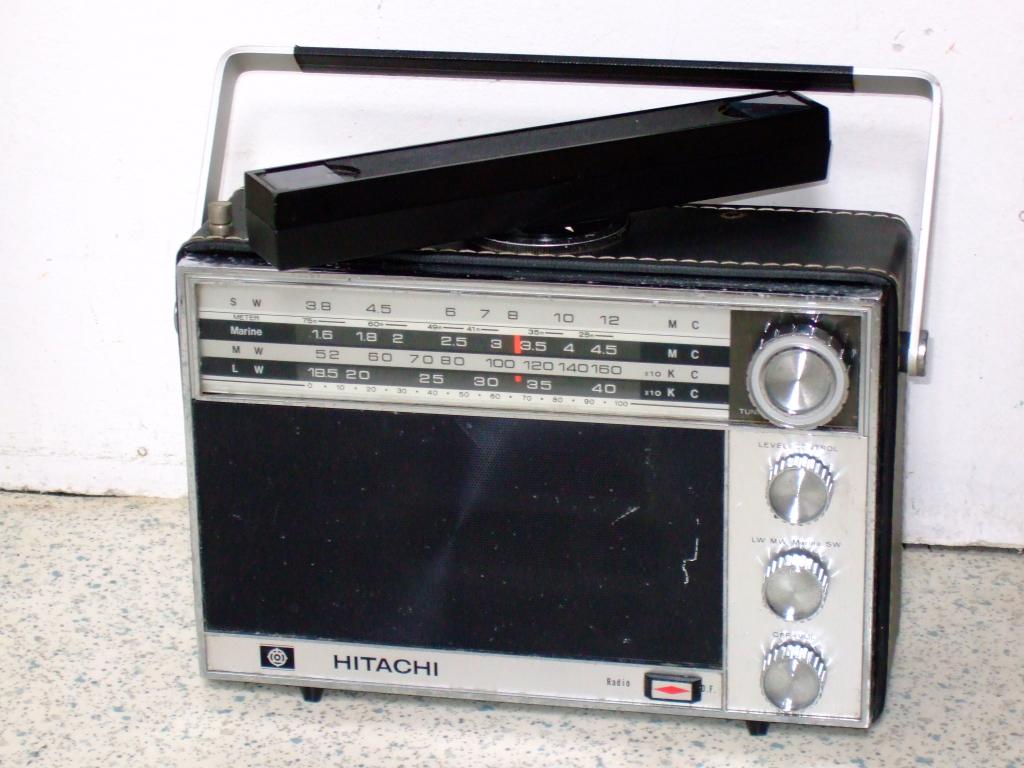
Popeye's set with direction finder
| Production | Japan, 1970. |
|---|---|
| Bands | LW (185-400kHz), MW (520-1620kHz), Marine (1.6-4.5MHz), SW (3.8-12MHz). |
| Semi- conductors | 11 transistors and diodes: 2SA350 (RF amp), 2SA350 (osc), 2SA350 (mixer), 1N34A (AGC), 2SA12 (IF amp), 2SA353 (IF amp), 2SA12 (BFO), 1N34A (det), 2SB75 (AF amp), 2x 2SA77 (AF), 2x 2SB156 (Output). |
| Cabinet | Cardboard with leatherette. Size 25x17x8 cm. Weight 1.6kg. |
| Power | Batt 4xD. |
| Documents | Schema. |

 Radios with a cardboard cabinet are often seen from Japan, and when the interior (left) of the radio is removed (right) the cardboard can be clearly seen. For this radio it is still in very good condition.
Radios with a cardboard cabinet are often seen from Japan, and when the interior (left) of the radio is removed (right) the cardboard can be clearly seen. For this radio it is still in very good condition.
This site by Chum Bucket has more information about the model, plus the claim that radio beacons are no longer operated since 2000.
| Obtained | 4/2007 from Queen's Day flea market. |
|---|---|
| Condition | 7. |
| Disposed | Sold 3/2015. |
| Sound sample | PLAY SOUND When I listened the water level announcements as a kid in the seventies, I didn't know what it was and though they were arithmetic exercises. |
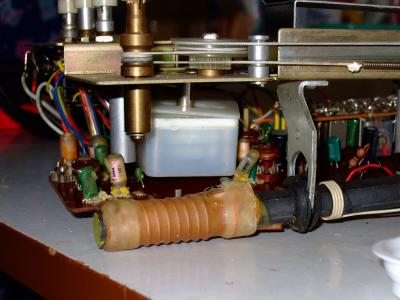 The radio did produce sound, but no tuning resulted from rotating the tuning button. I found out that the mechanical drive assembly was fine, so there was something wrong inside the tuning capacitor. It was a tough job to get it out, I had to push the internal ferrite rod a little, and unscrew the PCB from the chassis. Fortunately, the dial chord was not running over the capacitor drive wheel, but this last connection was by a tooth wheel.
The radio did produce sound, but no tuning resulted from rotating the tuning button. I found out that the mechanical drive assembly was fine, so there was something wrong inside the tuning capacitor. It was a tough job to get it out, I had to push the internal ferrite rod a little, and unscrew the PCB from the chassis. Fortunately, the dial chord was not running over the capacitor drive wheel, but this last connection was by a tooth wheel. 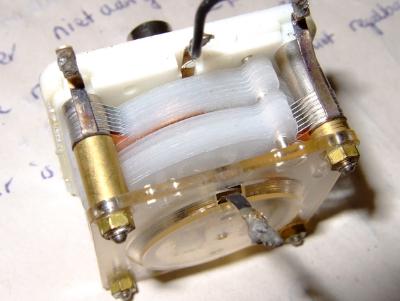
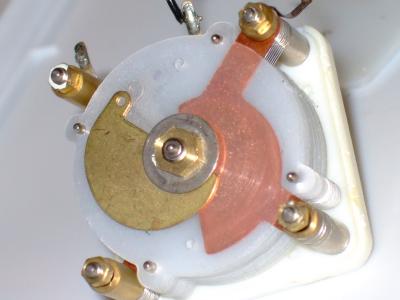 After dismantling and opening the cap I saw the plates (rotating and fixed for sections) and indeed, rotating the axis did not take the rotating plates into action. I didn't want to take all plates out, because of the wriggling necessary to put them back. I found all plates secured by a single bolt and nut (right), to my surprise a reverse rotating type. I had expected a square axis with blades with a square hole. Well, I rearranged the visible blades a little bit to be approximately aligned, and fixed the bolt (by running it counterclockwise). Measurement revealed that the capacity was now changing again, so I closed and remounted the capacitor, after which the radio worked.
After dismantling and opening the cap I saw the plates (rotating and fixed for sections) and indeed, rotating the axis did not take the rotating plates into action. I didn't want to take all plates out, because of the wriggling necessary to put them back. I found all plates secured by a single bolt and nut (right), to my surprise a reverse rotating type. I had expected a square axis with blades with a square hole. Well, I rearranged the visible blades a little bit to be approximately aligned, and fixed the bolt (by running it counterclockwise). Measurement revealed that the capacity was now changing again, so I closed and remounted the capacitor, after which the radio worked.
The radio has a BFO switch in the back, which indeed activates a BFO for receiving Continuous Wave transmissions, intended for hearing beacons. The tuning precision and general quality of the set will not allow you to do any serious SSB receiving.